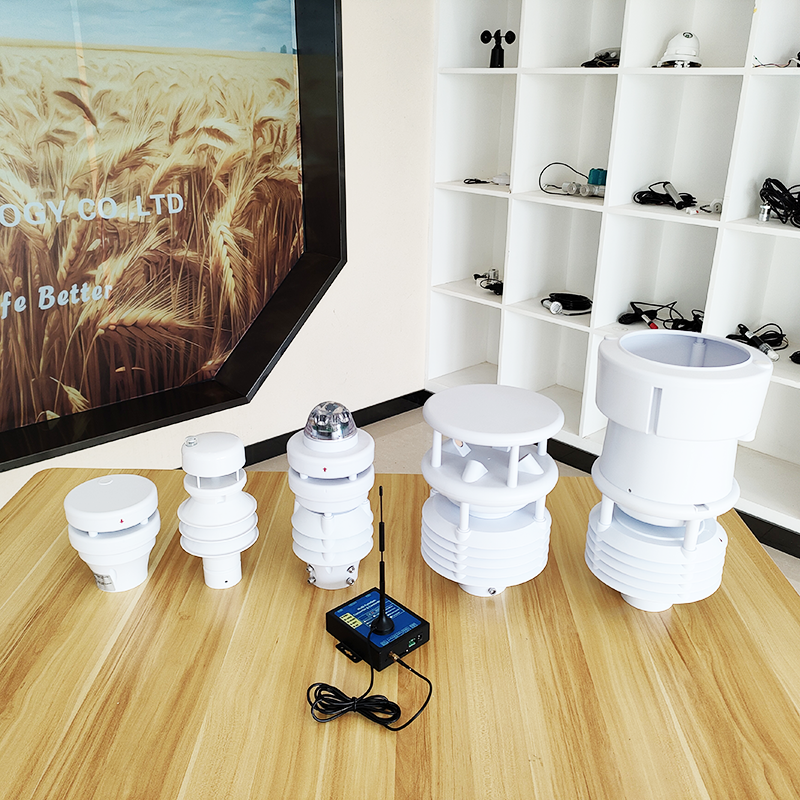Minnesota farmers soon will have a more robust system of information about weather conditions to help make agronomic decisions.

Farmers can’t control the weather, but they can use information about weather conditions to make decisions. Minnesota farmers soon will have a more robust system of information from which to draw.
During the 2023 session, the Minnesota state Legislature allocated $3 million from the Clean Water Fund to the Minnesota Department of Agriculture to enhance the state’s agricultural weather network. The state currently has 14 weather stations operated by the MDA and 24 managed by the North Dakota Agricultural Weather Network, but the state funding should help the state install dozens of additional sites.
“With this first round of funding, we hope to install about 40 weather stations in the next two to three years,” says Stefan Bischof, an MDA hydrologist. “Our ultimate goal is to have a weather station within about 20 miles of most agricultural lands in Minnesota to be able to provide that local weather information.”
Bischof says the sites will gather basic data like temperature, wind speed and direction, rainfall, humidity, dew point, soil temperature, solar radiation and other weather metrics, but farmers and others will be able to glean from a much wider array of information.
Minnesota is partnering with NDAWN, which manages a system of about 200 weather stations across North Dakota, Montana and western Minnesota. The NDAWN network began operating widely in 1990.
Don’t reinvent the wheel
By teaming with NDAWN, the MDA will be able to tap into a system that’s already developed.
“Our information will be integrated into their weather-related ag tools such as crop water use, growing degree days, crop modeling, disease forecasting, irrigation scheduling, temperature inversion alerts for applicators and a number of different ag tools that people can use to guide agronomic decisions,” Bischof says.
“NDAWN is a weather risk-management tool,” NDAWN Director Daryl Ritchison explains. “We use weather to help forecast crop growth, for crop guidance, disease guidance, to help determine when insects are going to emerge — a whole number of things. Our uses also go far beyond agriculture.”
Bischof says Minnesota’s agricultural weather network will partner with what NDAWN already has developed so that more resources can be put toward constructing weather stations. Since North Dakota already has the technology and computer programs needed to gather and analyze the weather data, it made sense to focus on getting more stations sited.
MDA is in the process of identifying potential sites for weather stations in Minnesota’s farm country. Ritchison says sites require only about a 10-square-yard footprint and space for about a 30-foot-tall tower. Preferred sites should be relatively flat, away from trees and be accessible year-round. Bischof hopes to get 10 to 15 installed this summer.
Broad impact
While the information gathered at the stations will be focused on agriculture, other entities such as government agencies use the information for making decisions, including when to put on or lift road weight restrictions.
Bischof says the effort to expand Minnesota’s network has received wide ranging support. Many people see the utility of having local weather information to help guide agronomic decisions. Some of those farming choices have far-reaching implications.
“We have a benefit to the farmers and also a benefit to water resources,” Bischof says. “With the money coming from the Clean Water Fund, information from these weather stations will help guide agronomic decisions that not only benefit the farmer but also minimize the impacts to water resources by helping those growers better utilize crop inputs and water.
“The optimization of agronomic decisions protects surface water by preventing off-site movement of pesticides that can drift to nearby surface water, preventing loss of manure and crop chemicals in runoff to surface water; minimizing leaching of nitrate, manure and crop chemicals to groundwater; and maximizing irrigation water usage efficiency.”
Post time: Aug-19-2024

